Kingisepp stands on the river Luga. It was founded as the Yam fortress, and was originally called that. The renaming to Yamburg was a tribute to the times. And at the beginning of the last century, the city was named after the Baltic revolutionary. Like many settlements in the Leningrad region, Kingisepp suffered from the Great Patriotic War. Some sights had to be restored, and new memorial objects appeared on the streets of the city.
Local parks should be given special attention. Romanovka, Summer Garden and others combine natural beauties and interesting stories from their past. They are rebuilt and restored, keeping the old style, but adding the details necessary for the modern world.
What to see and where to go in Kingisepp?
The most interesting and beautiful places for walking. Photos and a short description.
Catherine's Cathedral
The main Orthodox church in the city. Built in the second half of the 18th century. It bears the name of the Great Martyr Catherine of Alexandria. Closed in the 30s of the last century, a military warehouse was organized inside. In the period from 1979 to 1990, an exhibition of the local history museum "Old Yamburg" was held in the cathedral. After the temple was returned to the Russian Orthodox Church, and the re-consecration ceremony was personally conducted by Patriarch Alexy II in 2000.
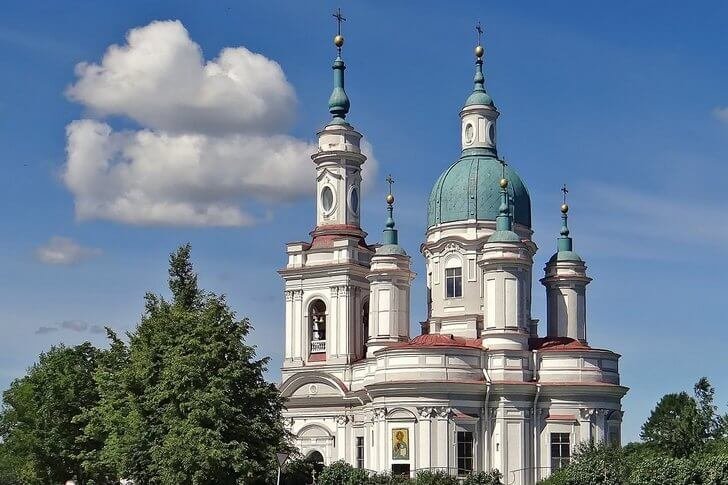
Park "Romanovka"
In the past, the territory belonged to the estate of General Bistrom, the hero of the war of 1812. Among other things, he ordered the construction of a house for crippled soldiers here. Now the building is used as a ski base. The General's grave is also located within the park. It has a bronze lion on it. "Romanovka" is arranged in the English style. The park hosts sports and cultural events throughout the year.
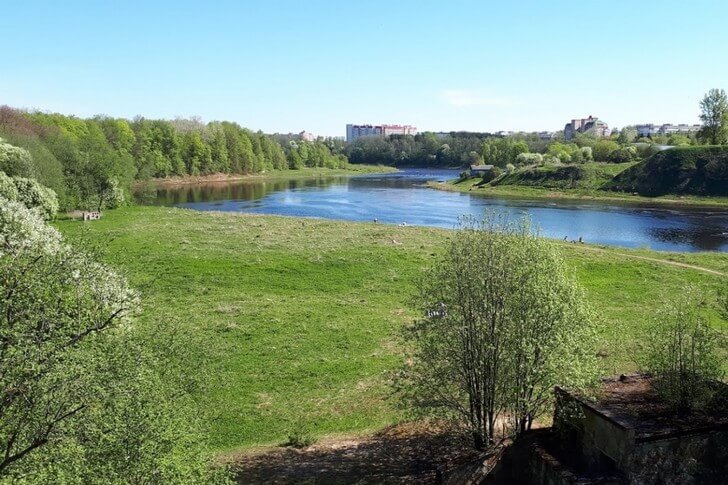
Park "Summer Garden"
Laid down by the personnel of the 146th Tsaritsinskiy Regiment. It was named after the founders. The name of the unit was removed after the revolution, and the park became first the "Garden of the Workers", then the "Dark Garden", and, finally, the "Summer Garden". During the existence of the USSR, the structure of the park was changed, but for the better - they added a summer cinema and a dance floor. Live music on holidays and weekends has also become the norm.

Museum of History and Local Lore
Founded in 1960. The building is an architectural monument of the beginning of the last century. It was built in Art Nouveau style and has two floors. Exhibitions change each other every year, but there is also a permanent exhibition. Since 2009, the museum has been preserving the history and culture of the region's small indigenous peoples. The unique objects of storage concern, among other things, the Izhora people. Their language is listed in the Red Book as endangered.
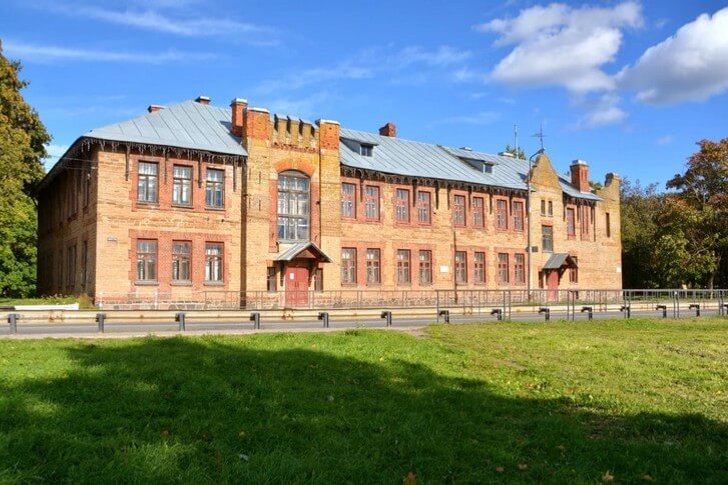
lutheran church
At this place in the past there was a church of St. Lazarus, destroyed in the 30s of the last century. The current church was built in 1996. Initially, this building began to be built as a family cafe. But in the process, it was decided to change the plan for its use. And although the spire-shaped roof with a cross on top clearly hints that the temple is in front of the tourists, the rest of the building is not very similar to it.
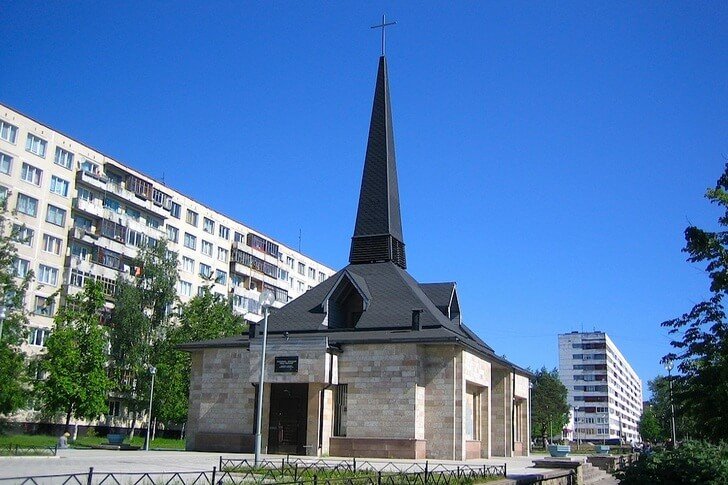
Monument "Cranes"
The opening took place in 2008. The project of the monument could not be accepted and implemented for 10 years for various reasons. The author is the famous sculptor A. Pogrebnoy, who was born in Kingisepp. The monument is dedicated to local soldiers who died in local wars. To date, 15 such people are officially known. The monument looks like a refined white arch, on top of which there are three cranes flying vertically into the sky.

Monument to Heroes-Partisans and Underground Workers
In the region, the partisan movement was able to save several thousand people. It was active and gave the enemy a lot of problems. In the surrounding forests, depressions in the ground are still preserved - the former dugouts of the underground. Their feat was immortalized through the installation of a monument. Nearby is a mass grave with the remains of 78 people. Most of them are unidentified. The names of the rest are inscribed on memorial plaques.

Monument to Adjutant General K. I. Bistrom
It is located in the Romanovka park on the grave of the hero of the war of 1812. A majestic bronze lion rises on the pedestal. His image was supplemented with a ball on which the king of beasts holds a paw. This is a reference to the integrity of the state. The inscription on the monument recalls the important battles where the general showed himself. The sculpture was attacked by vandals several times, but each time it was restored.
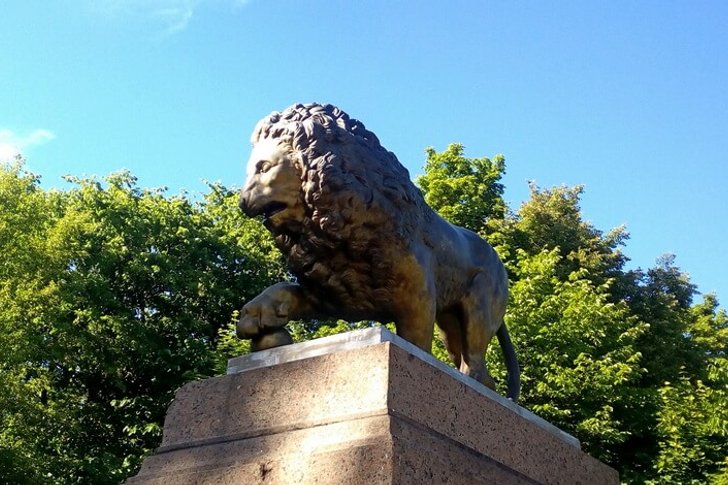
Memorial Park "Pyatisot Grove"
At this place, during the years of the Civil War, five thousand Bolsheviks were shot on the orders of Yudenich, hence the name. In 1941, a monument was erected, but it suffered during the Great Patriotic War. After the victory over the Nazis, the park received a new meaning: a mass grave was built for the fallen liberators of the city. Subsequently, the Stone appeared - a tribute to the memory of the prisoners of the German camps.
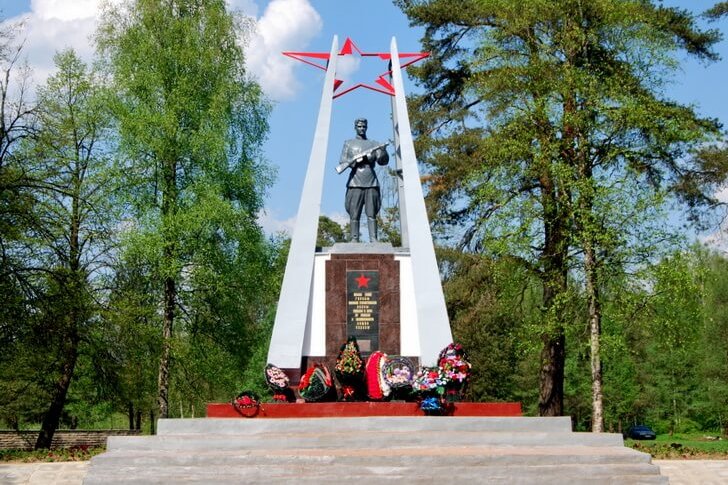
Barracks of the 146th Tsaritsyno Infantry Regiment
Construction has been going on since the 18th century. Further reconstructions concerned not only small details of design, but also the entire plan of the complex. So Gostiny Dvor during the reconstruction was transformed directly into barracks. Only a part of the former premises remained. For example, in the arena, where a children's sports school now operates. Nearby is the monument "Glory to the Heroes". He crowns the mass grave.
